The Art of Kitchen Design: Colours and Textures That Transform
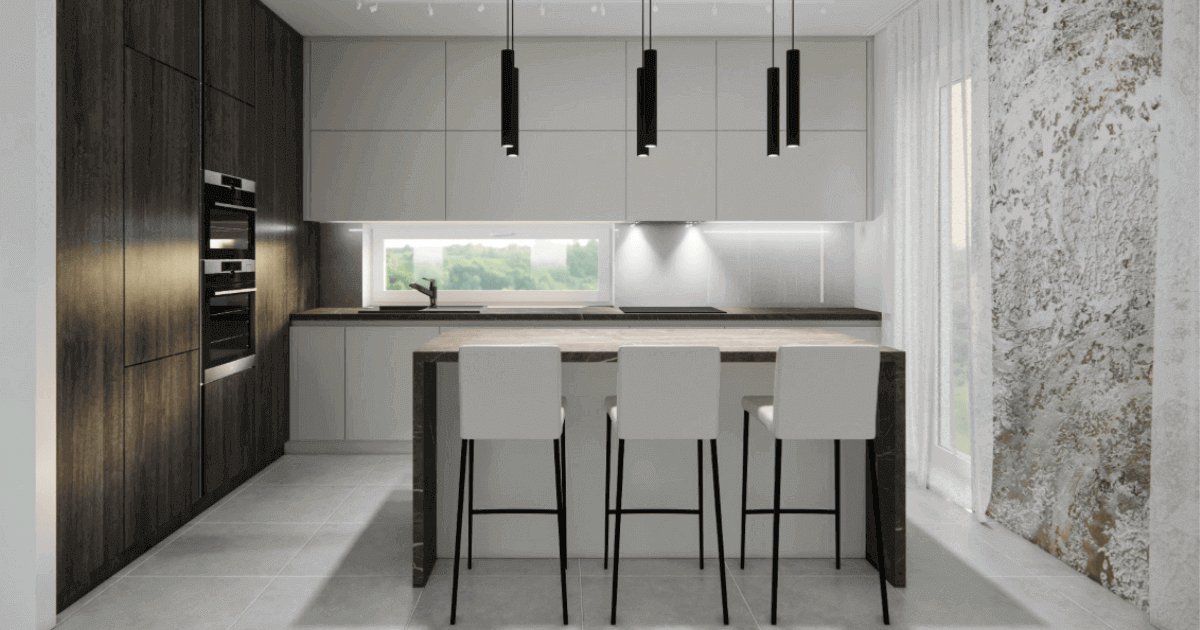
When it comes to kitchen design, the interplay of colours and textures plays a key role in creating a space that’s not only functional but also a reflection of your personal style. The kitchen, often referred to as the heart of the home, is where we gather, cook, and make memories. Therefore, its design requires a thoughtful approach, blending aesthetics and practicality. In this blog post, we’ll explore how to use colours and textures to breathe life into your kitchen, making it a warm and welcoming space for all who enter.
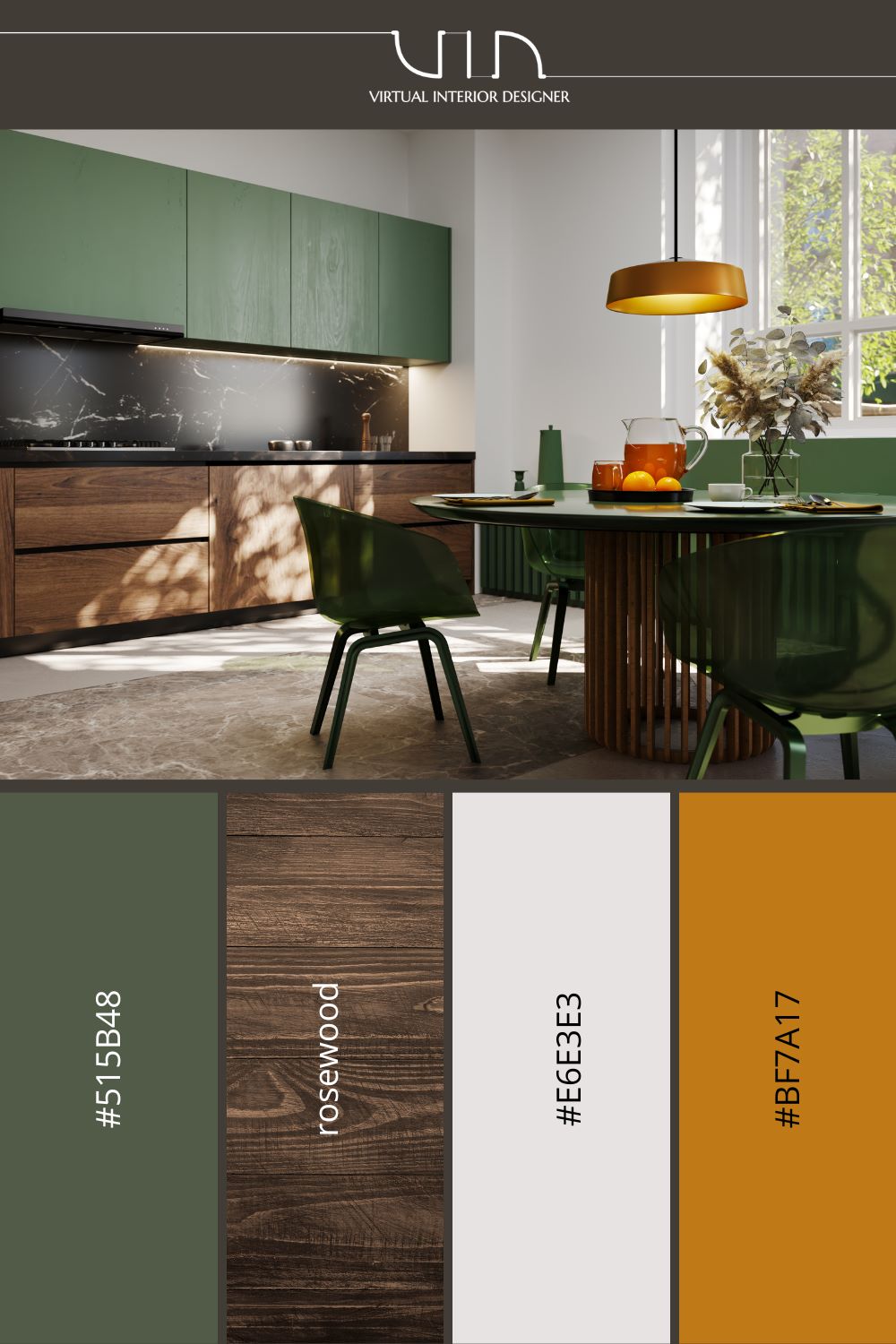
Colours: Setting the Tone
Neutral Palettes: A Canvas for Creativity
Neutral tones like whites, greys, and beiges are timeless in kitchen design. They offer a serene and calming backdrop, ideal for any kitchen style, from modern minimalist to rustic farmhouse. These hues not only make the space appear larger and more open but also allow for flexibility in decor. You can easily accentuate a neutral kitchen with vibrant accessories or bold statement pieces without overwhelming the space.
Bold and Vibrant Colours: a Splash of Personality
For those looking to infuse their kitchen with energy and personality, incorporating bold colours can be a game-changer. A striking blue island, emerald green cabinets, or sunny yellow backsplash can serve as focal points, bringing dynamism and vitality to the space. When playing with bold colours, balance is key. Pairing vibrant hues with neutral elements ensures the space remains harmonious and not overly busy.
Pastel Tones: Soft and Soothing
Pastel colours like soft blues, pinks, and mint greens offer a gentle touch of colour, perfect for creating a soothing and inviting kitchen environment. These hues pair beautifully with natural light, enhancing the sense of space and tranquillity. Pastel-toned kitchens work particularly well in shabby chic or Scandinavian-inspired designs, where simplicity and comfort are paramount.
When choosing colours, the key is to find a balance between light and dark, bright and pale, cool and warm. You can also mix the above palettes; in which case the balance will be determined by the proportions between the different palettes. You can create exciting combinations by gently mixing dark elements such as anthracite or coffee brown with a pastel palette, or by boldly spicing up a natural palette with a bold colour.
Textures: Adding Depth and Dimension
Natural Wood: Warmth and Rustic Charm
Wooden elements in the kitchen bring an instant warmth and rustic charm that’s hard to replicate. Whether it’s wooden cabinetry, a butcher block countertop, or open shelving, the natural grain and texture of wood add depth and character to the kitchen. Mixing wood tones can also create a layered, eclectic look, adding to the kitchen’s cozy ambiance.
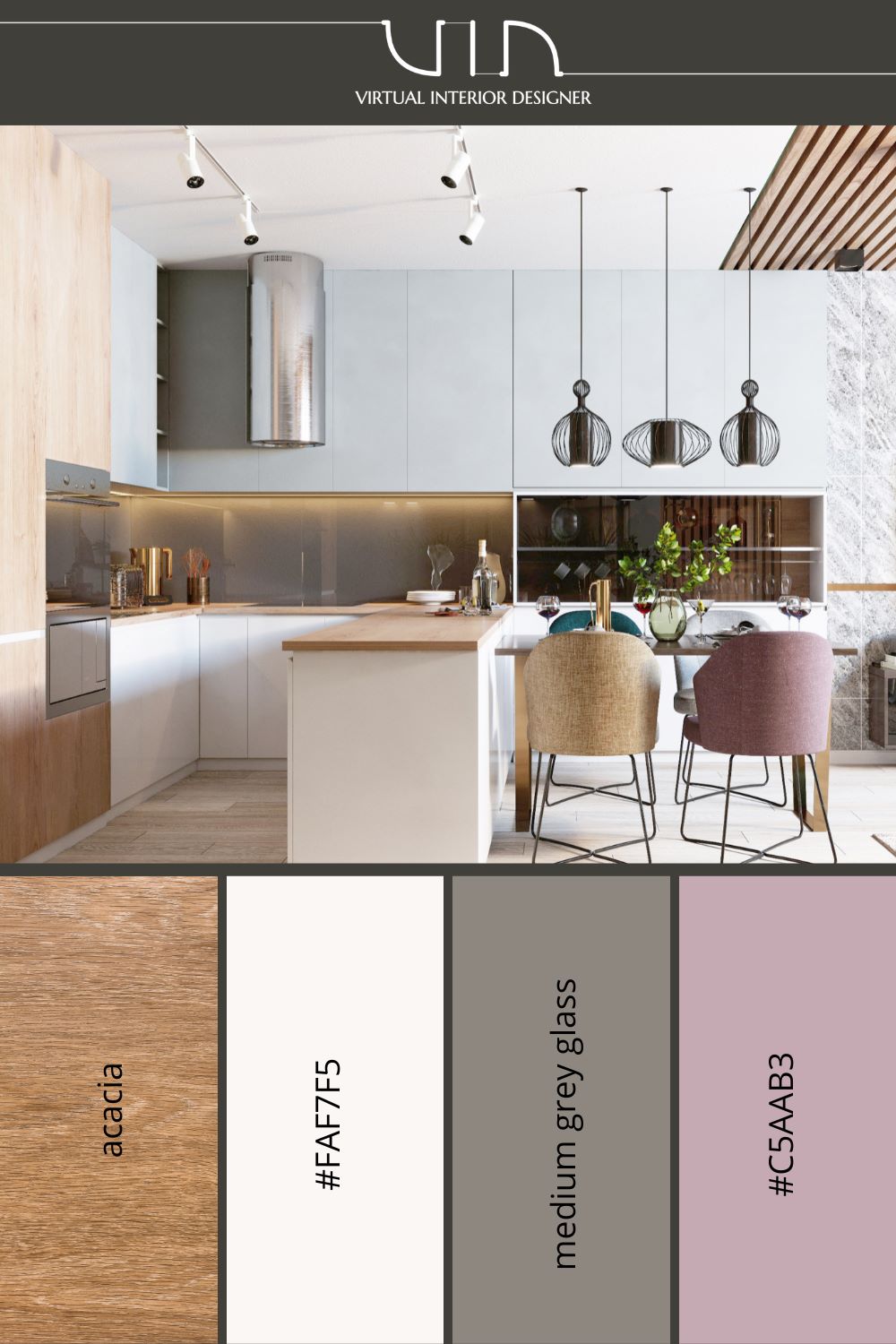
Metallic Accents: Sleek and Modern
Incorporating metallic textures, such as stainless steel appliances, brass cabinet handles, or a copper range hood, can add a sleek and modern touch to your kitchen. These elements reflect light, contributing to a brighter, more open feel. Mixing metals is a contemporary trend that lends a sophisticated, curated look to the kitchen space.
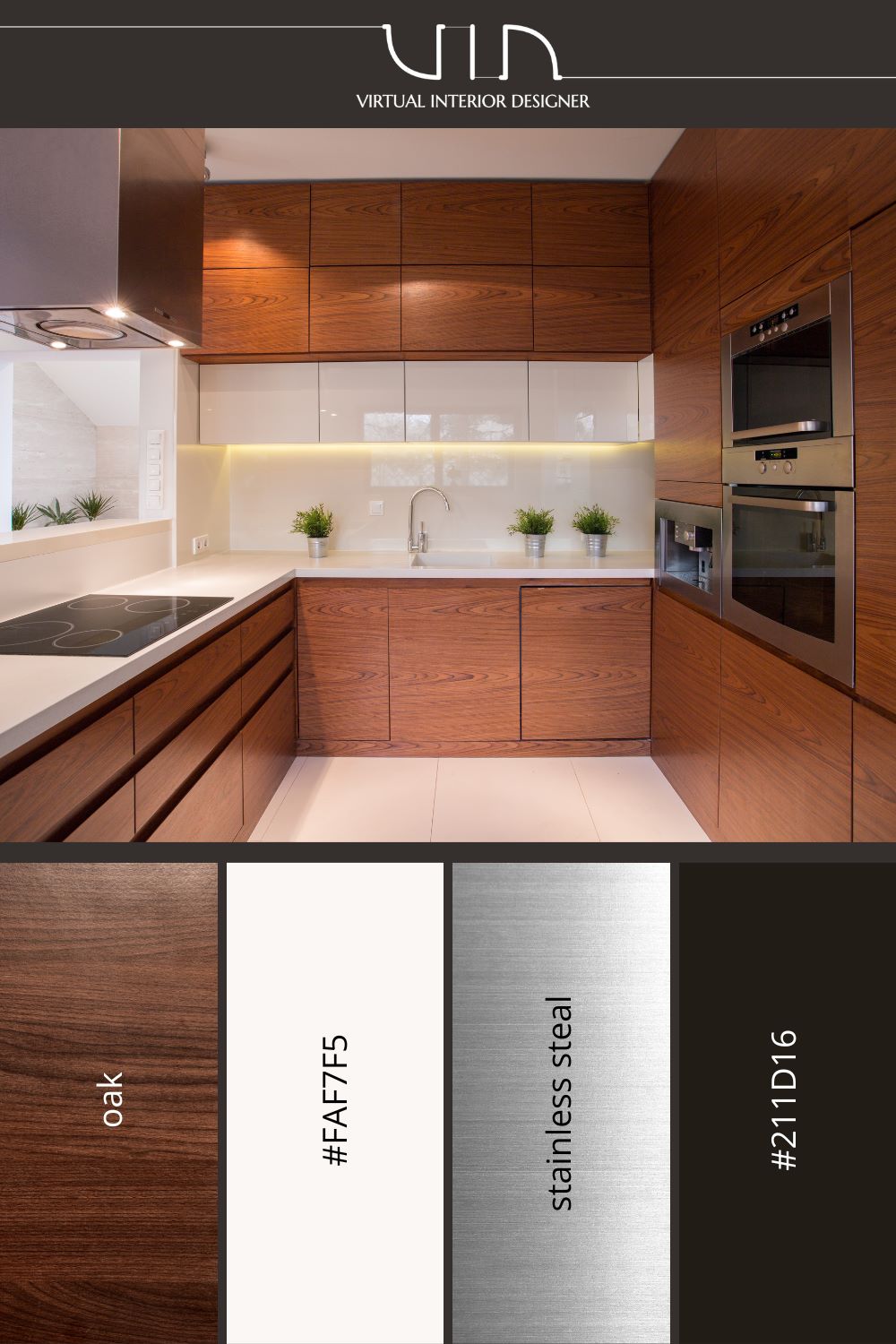
Stone Surfaces: Elegance and Durability
Stone textures, including granite, marble, and quartz, bring an element of natural beauty and elegance to the kitchen. Each piece of stone is unique, adding a one-of-a-kind appeal to countertops, backsplashes, or flooring. Beyond aesthetics, stone surfaces are incredibly durable and resistant to heat, making them a practical choice for busy kitchens.
Ceramic Tiles: Colourful and Versatile
Ceramic tiles offer endless possibilities for introducing both colour and texture into the kitchen. From hand-painted tiles with intricate designs to sleek subway tiles, they can adapt to any style, adding visual interest and personality to walls, floors, or backsplashes. The reflective quality of glazed tiles can also help brighten the space, making it feel airier and more spacious.
Glass: The Jewel of Kitchen Design
The use of glass as a texture introduces an element of sophistication and spaciousness. Its translucent properties allow for a playful dance of light, giving the illusion of a brighter, more open space. Glass-front cabinets can showcase beautiful dishware while maintaining an organized look, and glass backsplashes reflect light, adding depth and a modern flair. Whether clear, coloured, or textured, glass adds a layer of visual interest and can be a focal point or a subtle complement to the overall design, embodying both elegance and functionality in the heart of the home.
Different styles use and mix materials to varying degrees, for example, the traditional style uses more wood and ceramics but less metal, while the modern minimal style uses a higher proportion of metal or even natural stone surfaces as an essential part of the design.
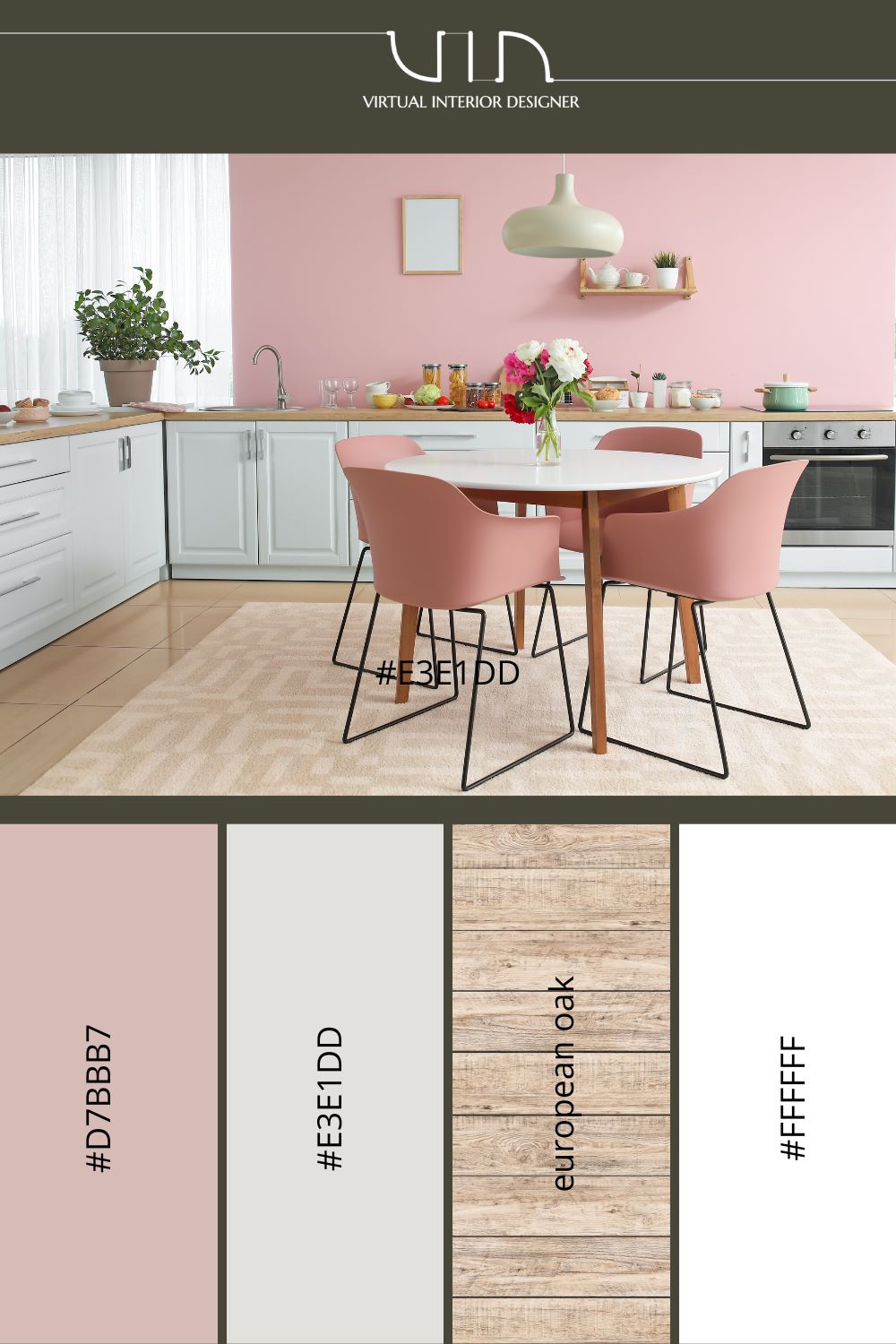
Final Thoughts
The kitchen is more than just a place to prepare meals; it’s a canvas for your personal style and creativity. By thoughtfully selecting colours and textures, you can transform your kitchen into a space that not only meets your functional needs but also resonates with your aesthetic preferences. Remember, the key to a successful kitchen design lies in achieving a balance—allowing colours and textures to complement each other, creating a harmonious and inviting space that you’ll love spending time in. Whether you prefer a soothing neutral palette or a bold and vibrant scheme, your kitchen’s design is an opportunity to express your unique vision and create a space that truly feels like home.

